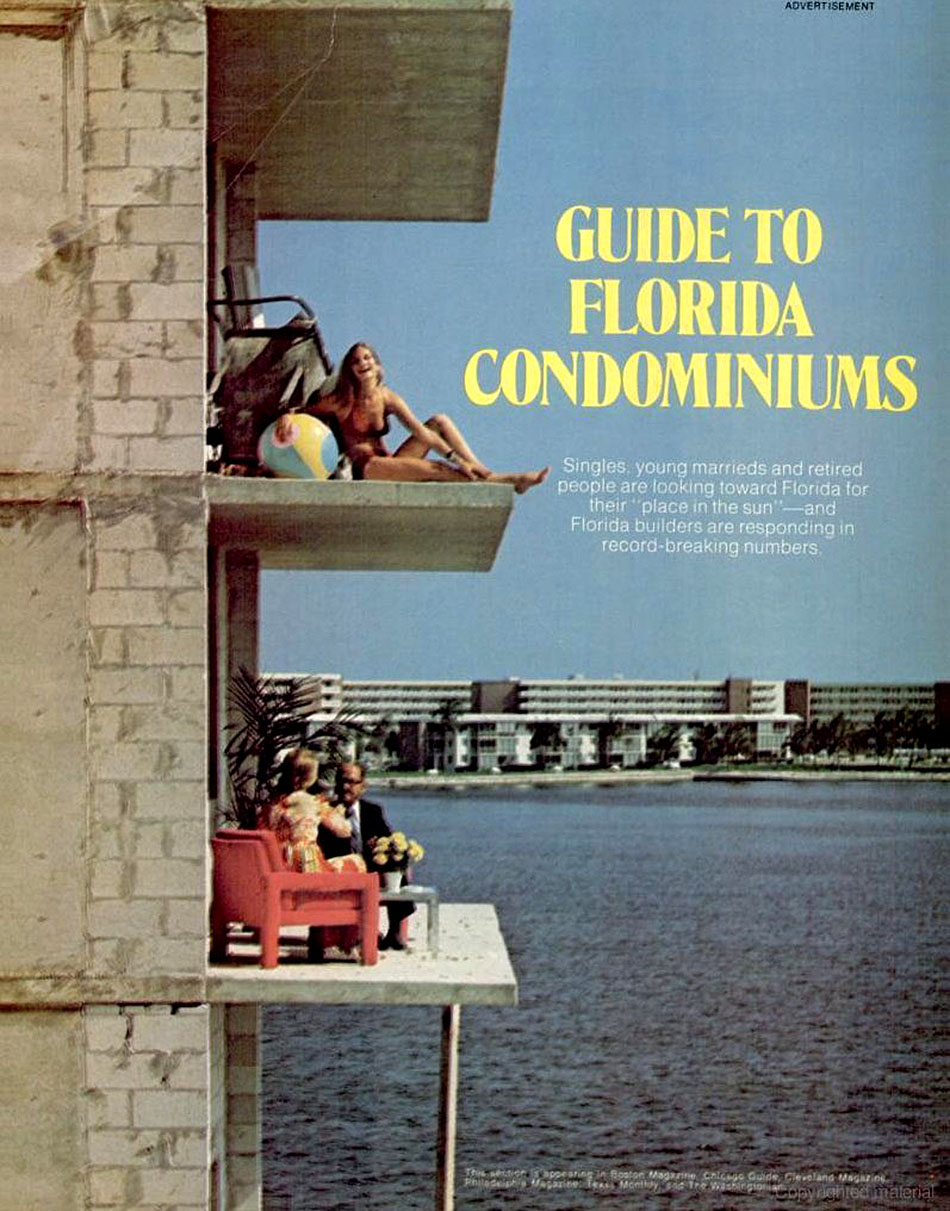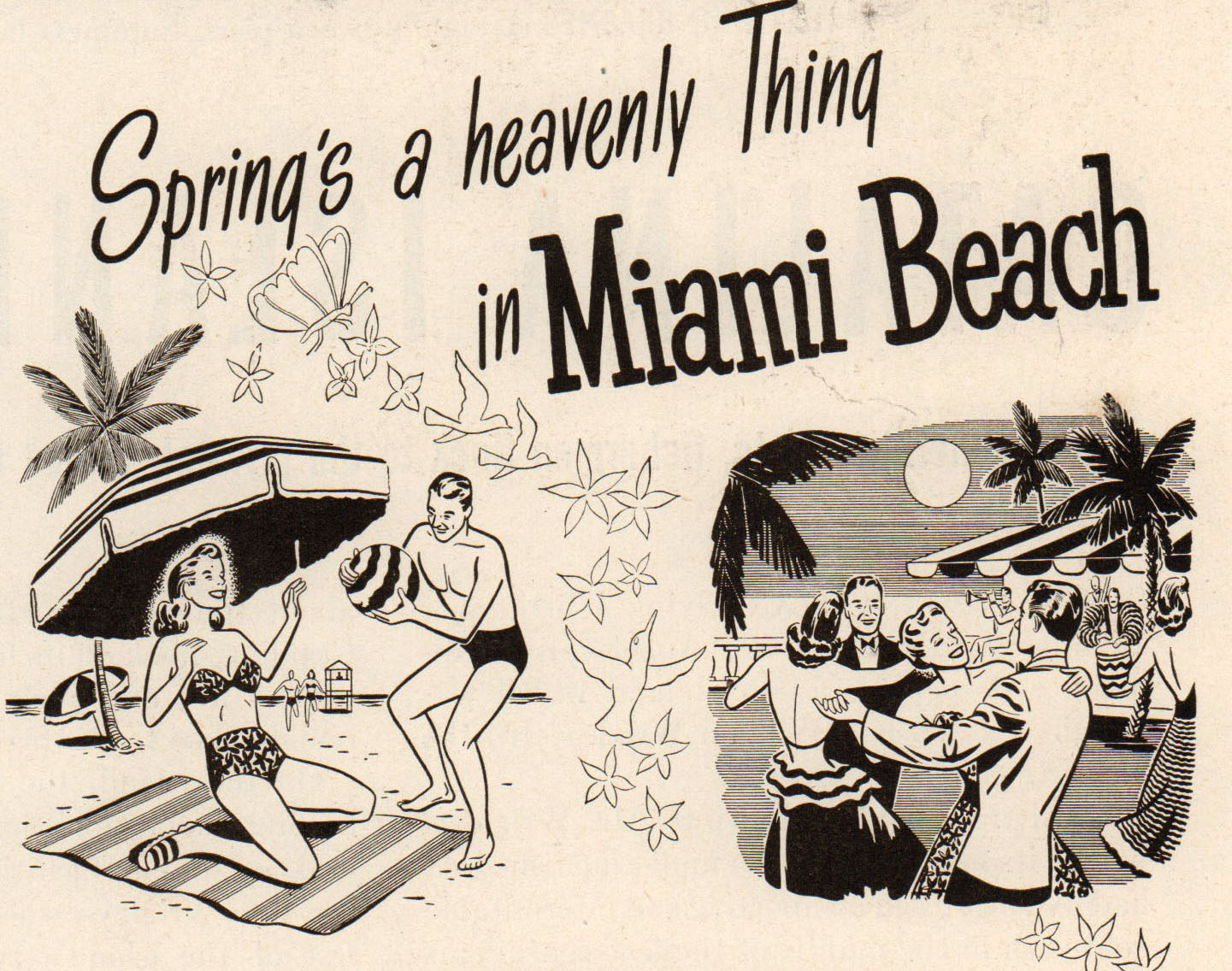
Miami was a thriving tourist destination throughout the sixties, with Jackie Gleason moving his shows to the Magic City, calling it the “sun and fun capital of the world” on camera each week. Post-war vacationers flocked to its beautiful beaches lined with pastel art-deco architecture.
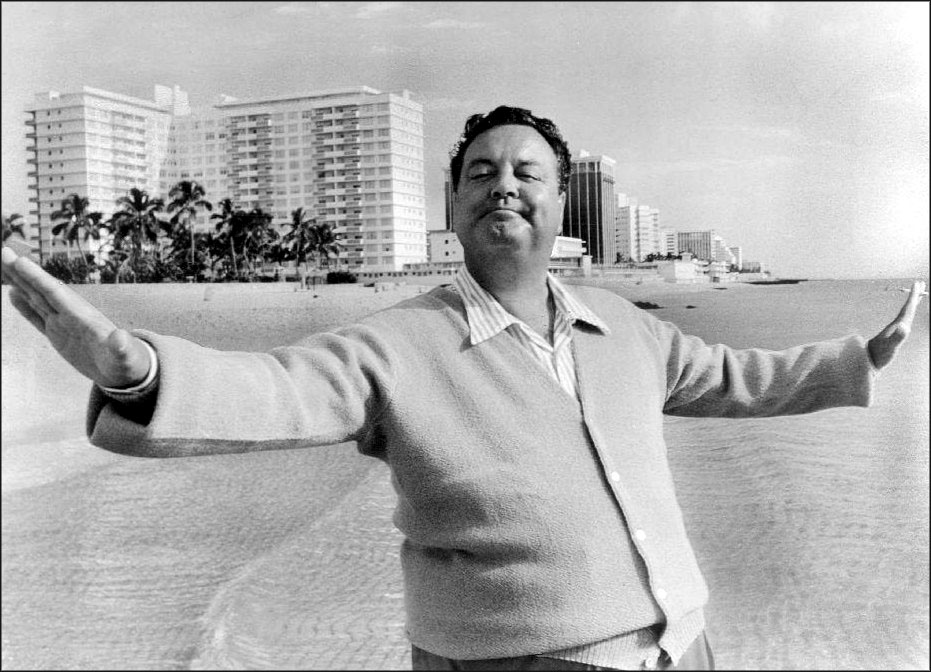
Gleason and his “sun and fun capital of the world” in 1968
But then something happened in the seventies, and tourism plummeted. As if to signal its catastrophic fall from grace, in 1972 the Democratic National Convention was hosted in Miami Beach; riots and revolt broke out everywhere. A month later, the Republican National Convention was also held there to even more hostile crowds.

With Vietnam chanting protesters, RNC cars surrounded and windows shattered, the Republicans felt terrorized and unsafe.
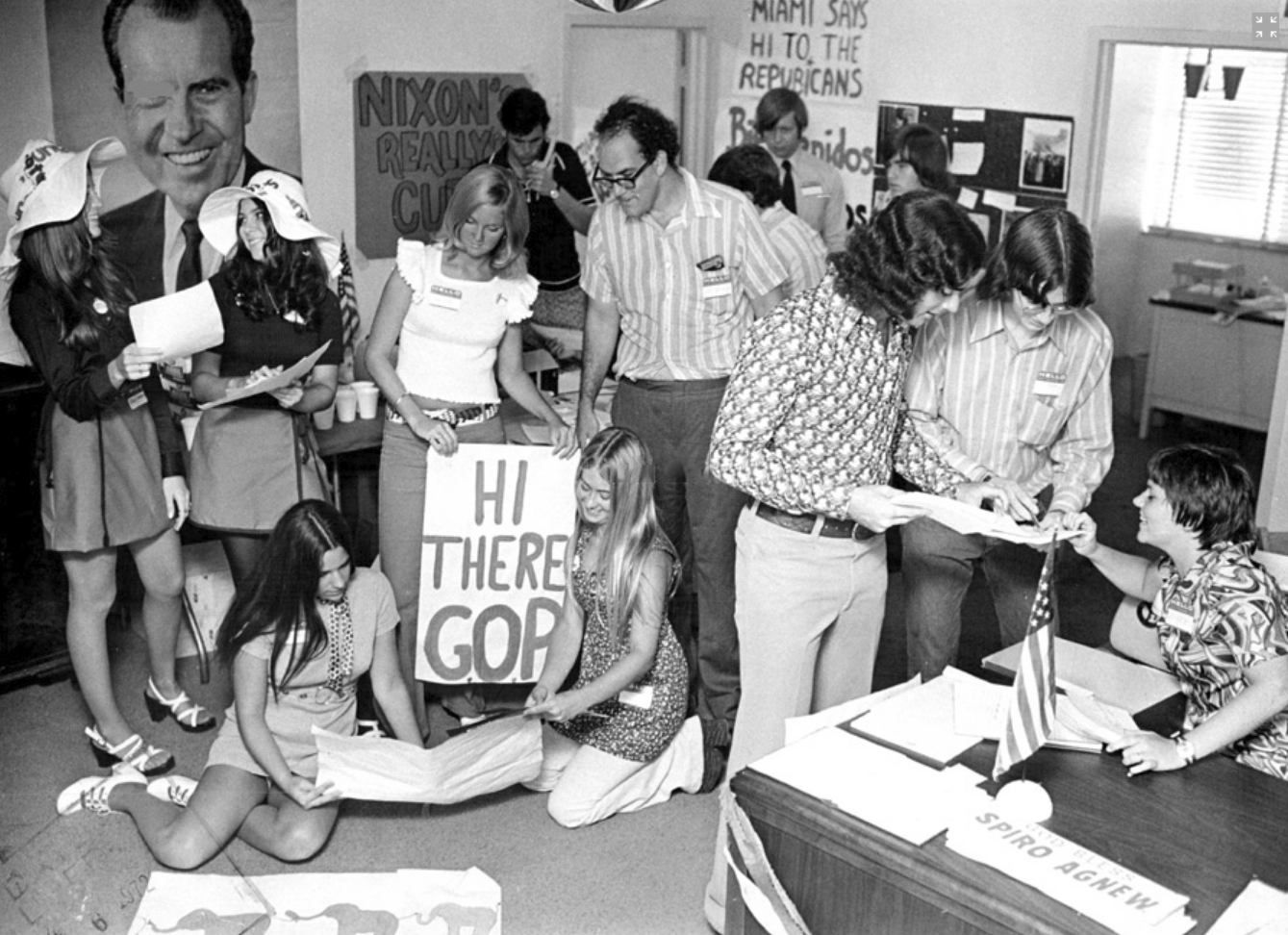
But there were, of course, two sides in this conflict. Here we find the youth rallying for Nixon and his VP running mate, Spiro Agnew. One sign in the back actually reads “Nixon’s Really Cute”.
In the end, the convention went on, but Miami’s brand as the “sun and fun capital of the world” was gone. If people were going to go to Florida for their vacation, they avoided Miami like the plague and went to the new Disney World instead, which opened in 1971, and siphoned away tons of tourism.
With an economy about to go off the cliff, real estate owners and other businesses started targeting retirees. The so-called “Greatest Generation” and “Silent Generation” were at retirement age, and the marketing worked, with tons of senior citizens relocating from cold climates up east. But this “Land of the Elderly” status didn’t exactly boost tourism. Indeed, Lenny Bruce is credited as saying: “Miami Beach is where neon goes to die.”
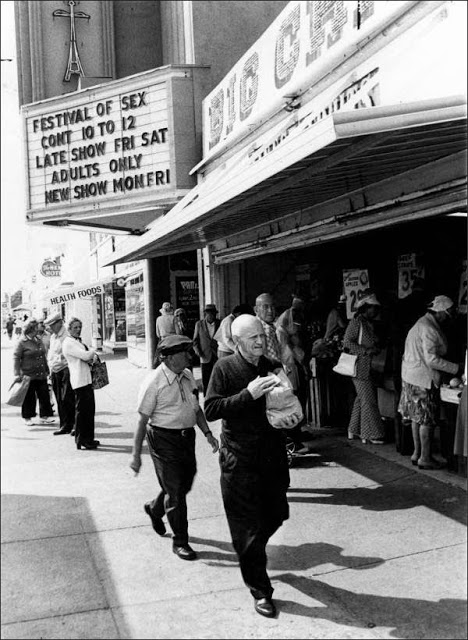
Paris Theater and Big Chips fruit market on Washington Ave., Miami Beach
“Festival of Sex” alongside a fruit market – perfectly illustrating the dichotomy of Miami in the seventies: older retirees living in a city replete with crime and urban blight.
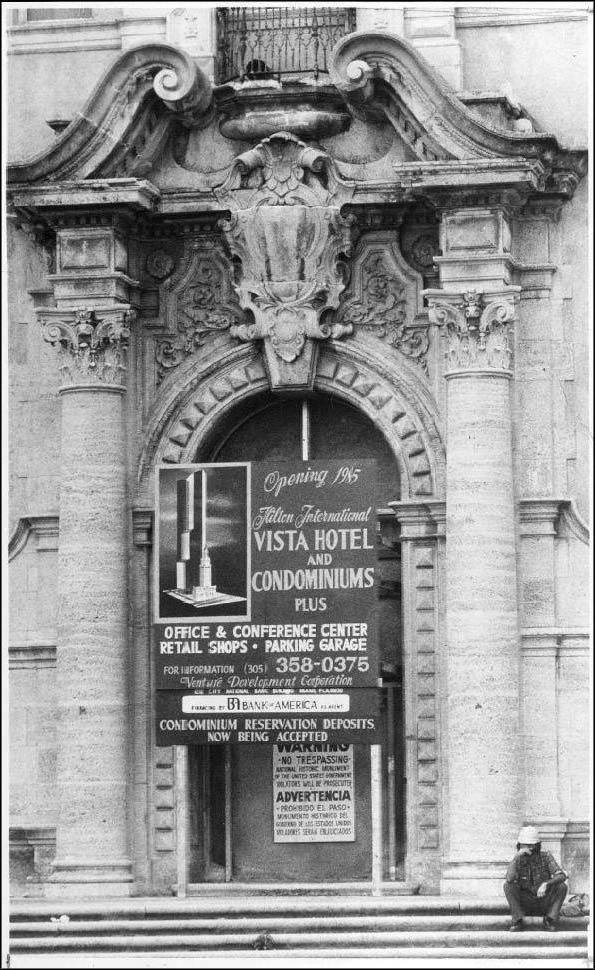
Freedom Tower also illustrates of the changing face of Miami – where retirees were being lured in at all costs.
Freedom Tower was built in 1925 and housed the Miami News. The newspaper left in 1957, and the building was used by the federal government to take in Cuban refugees – to provide medical treatment and process documentation. The feds left in 1972, and it was sold to private buyers who used it for condominiums – attracting the aforementioned influx of retirees.
But Miami hadn’t totally abandoned hope of attracting tourists. The National Airlines campaign (famous for its new “Fly Me” slogan) beckoned folks to the city…
“You hear birds sing. You relax in a seat that’s striped like a beach chair. You nibble on Florida shrimp and conch fritters, and sip a long, cool, Florida drink. Smile. You’re on National Airlines.”
I love the cover of this booklet, not just for its significance to our topic, but check out the total lack of railings around the balconies! This would not fly today.
Another TV commercial urging people away from the cold with their new jingle: “When You Need It Bad, We’ve Got It Good. “
A film by by Coronado Studios for the Tourist Development Authority of Miami Beach, circa 1970:
But for all these attempts to lure in tourists, in the eighties it only got worse. Fidel Castro upped his game sending over his prisoners and crime subsequently went through the roof. On one hand we have the nation’s retirees going to live out their final days, and on the other we have a drug war zone yielding unprecedented violence. South Beach had earned such a horrible reputation that it almost changed its name to “Oceanside”.
Worse still, Miami Beach mayor Alex Daoud got busted on so many criminal counts that he faced 528 years in prison! Among his crimes, Daoud would ride with police officers, find a suspected criminal on the street and beat the shit out of him.
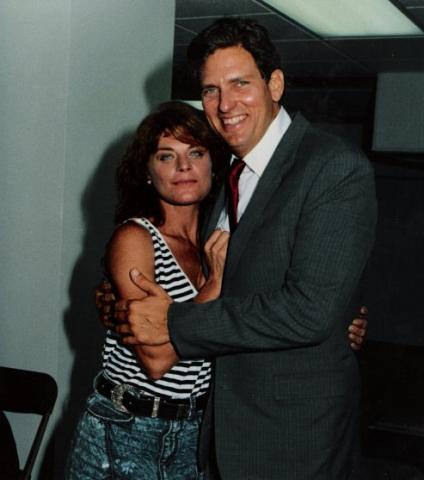
Actress Meg Foster and Alex Daoud on the set of Miami Vice where Alex played the part of a corrupt (!) judge in the episode “Fruit of the Poison Tree”.
Miami Herald crime reporter Edna Buchanan claimed that at one point in the ’80s, an entire Miami police academy graduating class ended up dead or in jail. And a local police scientist in Cocaine Cowboys (an amazing documentary on these turbulent times) estimated that any random $20 bill plucked from a Miami wallet in 1981 would have revealed traces of cocaine.
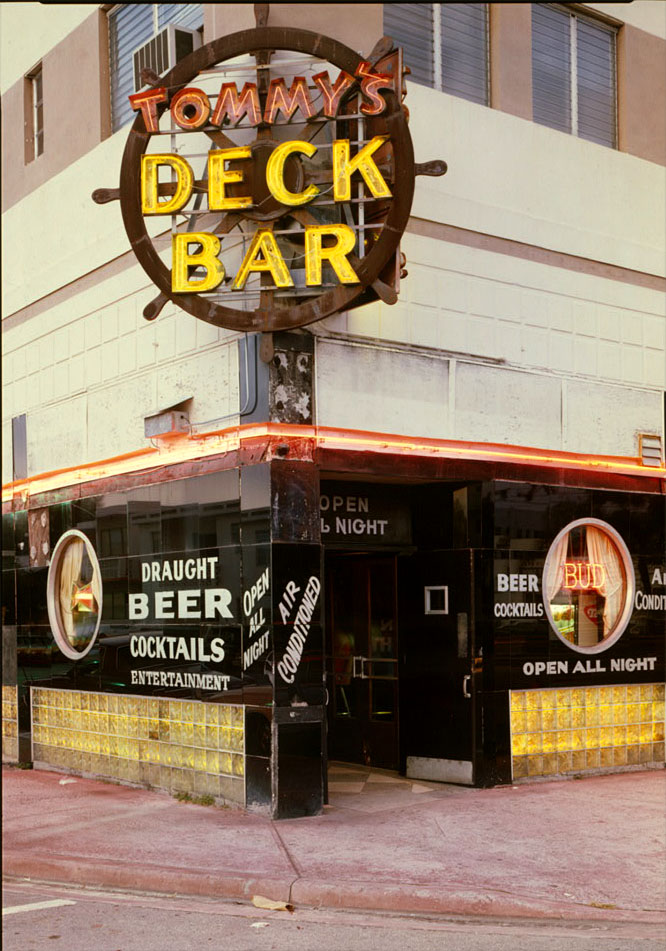
What location better encapsulates Miami’s crime years than the infamous Tommy’s Deck Bar, known as “The Neighborhood Bucket of Blood” due to its draw for drug dealers and the resulting violence. In September 1986 it was forced to close its doors when its liquor license was revoked. The police had been called to this spot a whopping 168 calls that year alone!
It was a sad testament to what had happened to the city. The bar had once been the venue for Jimmy Durante and Dean Martin. Now, as the soon-to-be-arrested Mayor Daoud put it: “That place has been an absolute cesspool for crime and criminal activity. I’m hoping we’ll start closing down a lot more of these bars.” [Miami Herald, September 21, 1986].
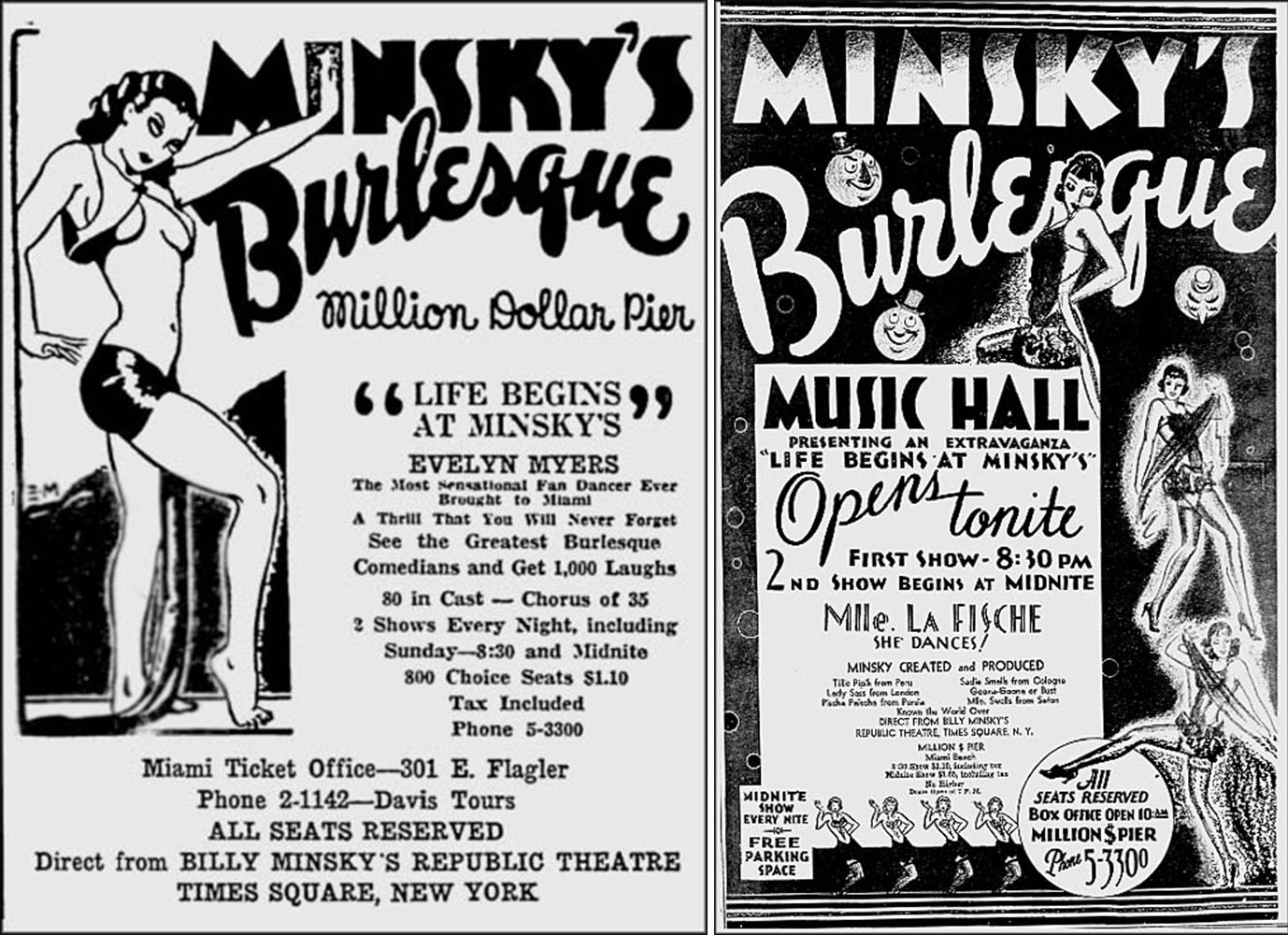
If the decline of Tommy’s Deck Bar was a sad sign of the times, then Miami’s South Beach Pier was even more so. It once served as the location for the legendary Minsky’s burlesque club; when it was destroyed by an errant barge during a hurricane, the pier became a popular place to fish, dance, and enjoy a sense of community. But by the 1970s, it had been overrun by drug dealers and was subsequently destroyed.
From the Miami Herald: “I can’t think of a city with a worse track record of preservation…. In the past two years, the city has approved the destruction of three blocks of Art Deco hotels, its streamline moderne Sheridan Theater and its only surviving red brick and Dade County pine warehouse. [“Built in Boomtime, Beach Pier to be Demolished as Eyesore”, Miami Herald, November 22, 1984]
It seemed that all connections with its former glory days were being destroyed.
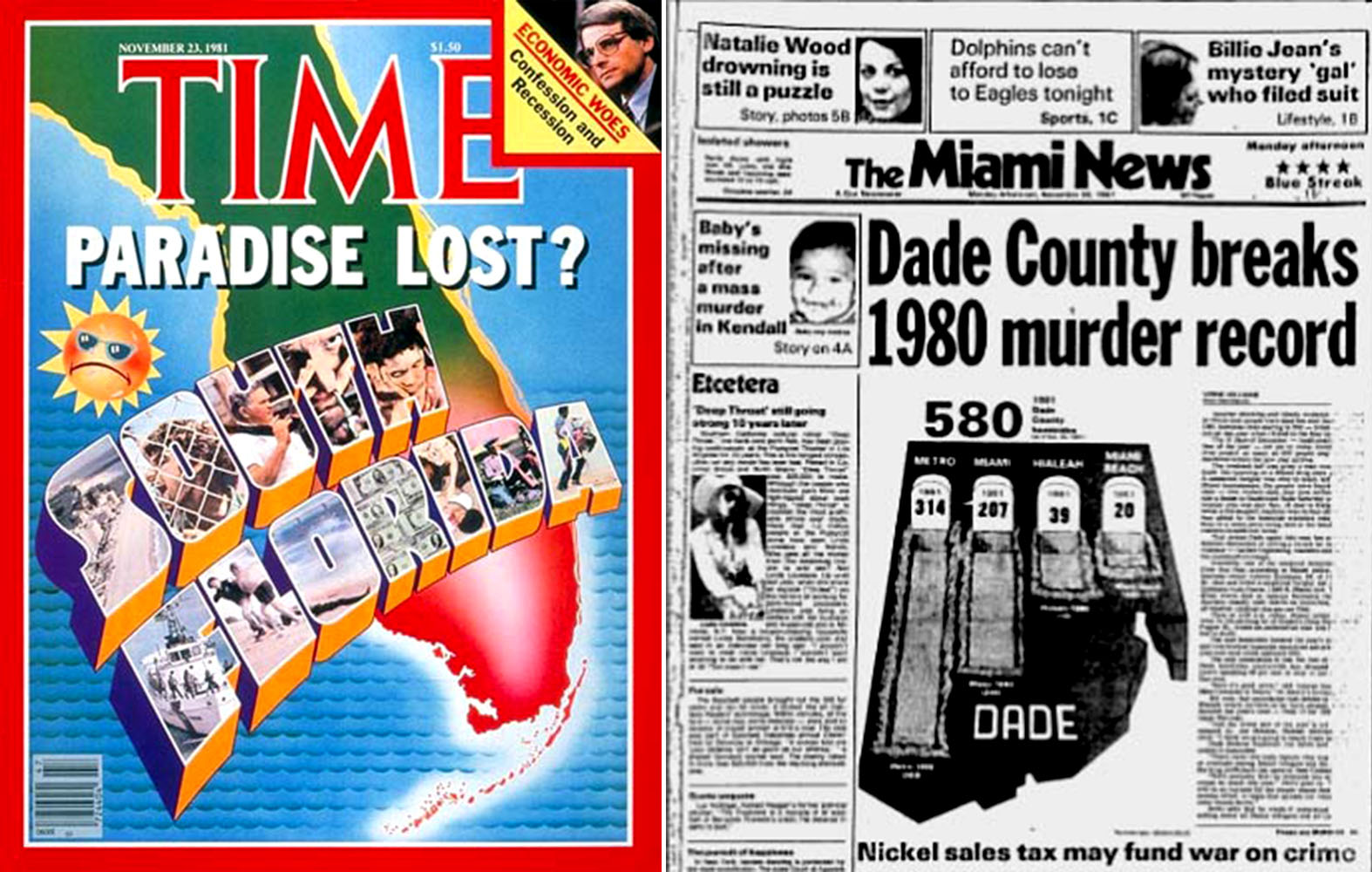
On Nov. 23, 1981 TIME Magazine published some troublesome stats in an article titled “Trouble in Paradise”:
- FBI issued its annual list of the ten most crime-ridden cities in the nation last September, three of them were in South Florida
- An estimated 70% of all marijuana and cocaine imported into the U.S. passes through South Florida.
- Drug smuggling could be the region’s major industry, worth anywhere from $7 billion to $12 billion a year (vs. $12 billion for real estate and $9 billion for tourism)
- At the moment, Bade County police have a stash of 162,000 Ibs. of marijuana waiting to be entered as evidence in court cases.
- Last year law enforcement officials seized 3.2 million Ibs. of marijuana, with a street value of $ 1.3 billion, and 2,353 Ibs. of cocaine worth $5.8 billion, in and around South Florida
- Most, if not all, of Miami’s 250 banks have drug money in their accounts. As many as 40 banks still neglect to report cash deposits of $10,000 or more, as required by law. And at least four banks, according to law enforcement officials, are controlled by drug dealers.
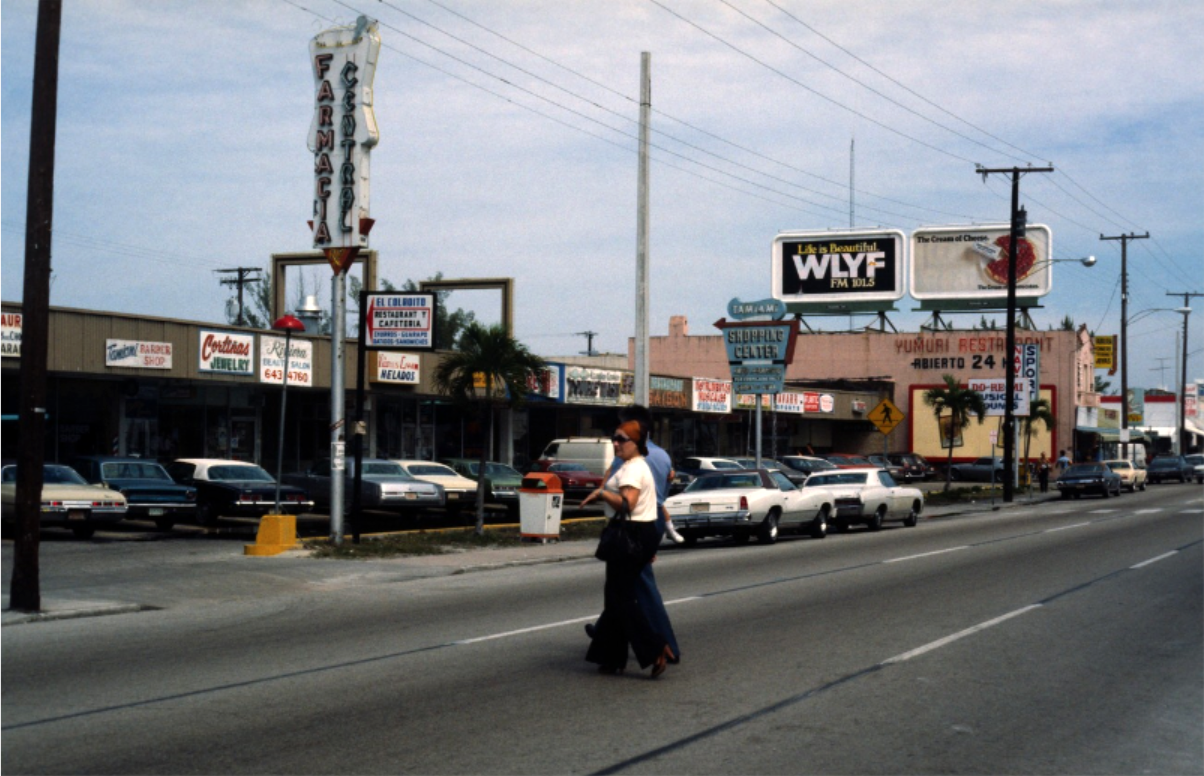
Miami “Little Havana” – 1978
In 1982, the Wall Street Journal published an article stating that a full 20 percent of all unreported income in the United States came from Miami. The area generated 40 times more unreported cash than the rest of the country – an astonishing figure!
But there was a silver lining to this story. The article was read by Anthony Yerkovich, who was so inspired by this stat, that he wrote a television pilot called “Miami Vice”.
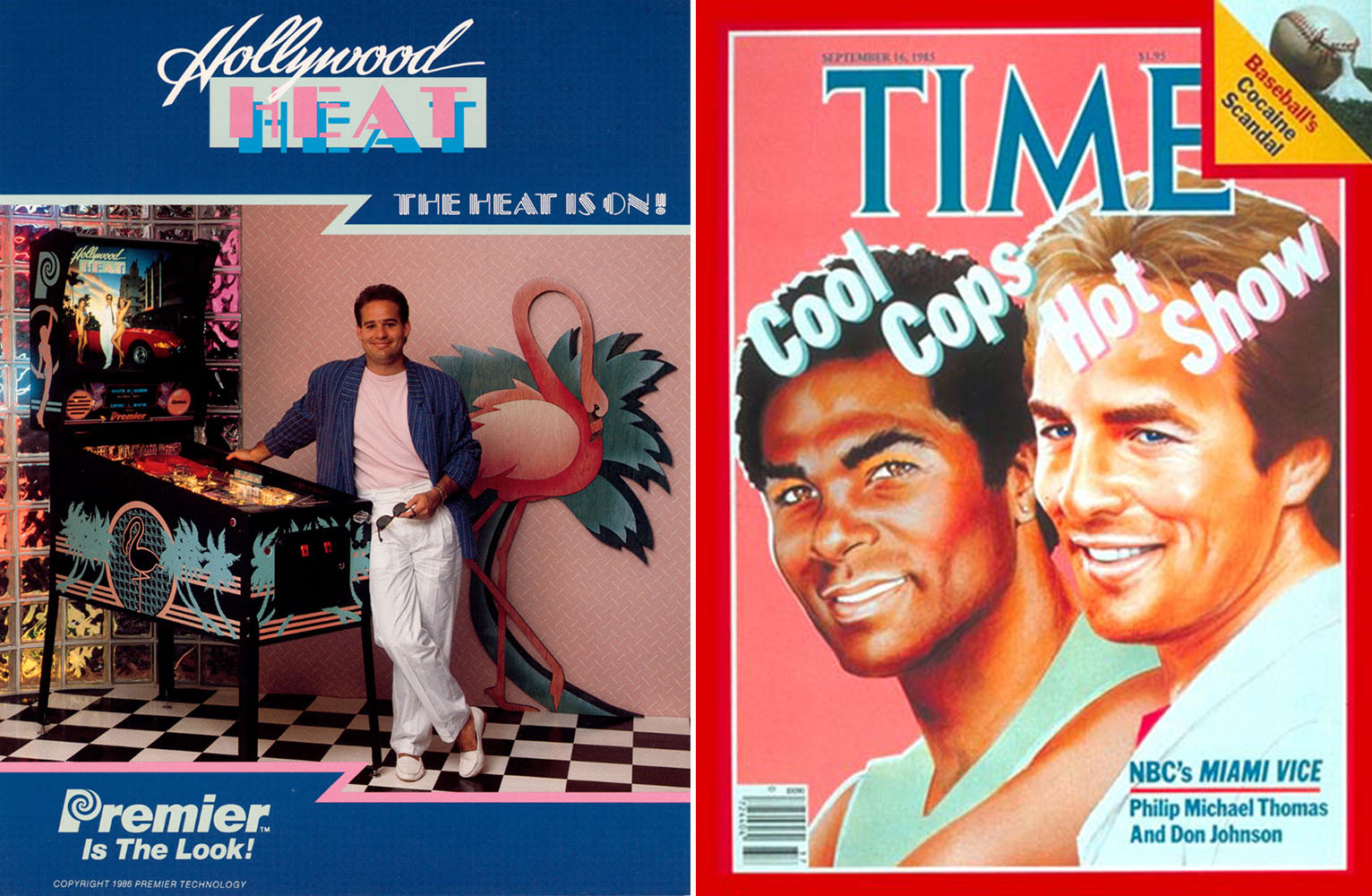
The show had a significantly positive impact on the city’s image, and it was well on its way to restoration due to a number of factors beyond Miami Vice – an economic upturn, better (less corrupt) law enforcement, a decline in the cocaine wars, Versace and a massive migration of the gay community. Things were and are still looking up for Gleason’s “sun and fun capital of the world”.
Would you like to support Flashbak?
Please consider making a donation to our site. We don't want to rely on ads to bring you the best of visual culture. You can also support us by signing up to our Mailing List. And you can also follow us on Facebook, Instagram and Twitter. For great art and culture delivered to your door, visit our shop.

